NEUR305: Cerebellum
1/28
There's no tags or description
Looks like no tags are added yet.
Name | Mastery | Learn | Test | Matching | Spaced |
|---|
No study sessions yet.
29 Terms
What is the major function of the cerebellum?
Analyze errors between intended motor output and actual motor output.
What information crosses the midline (contralateral projection)?
Information from the pontine nuclei and inferior olive!
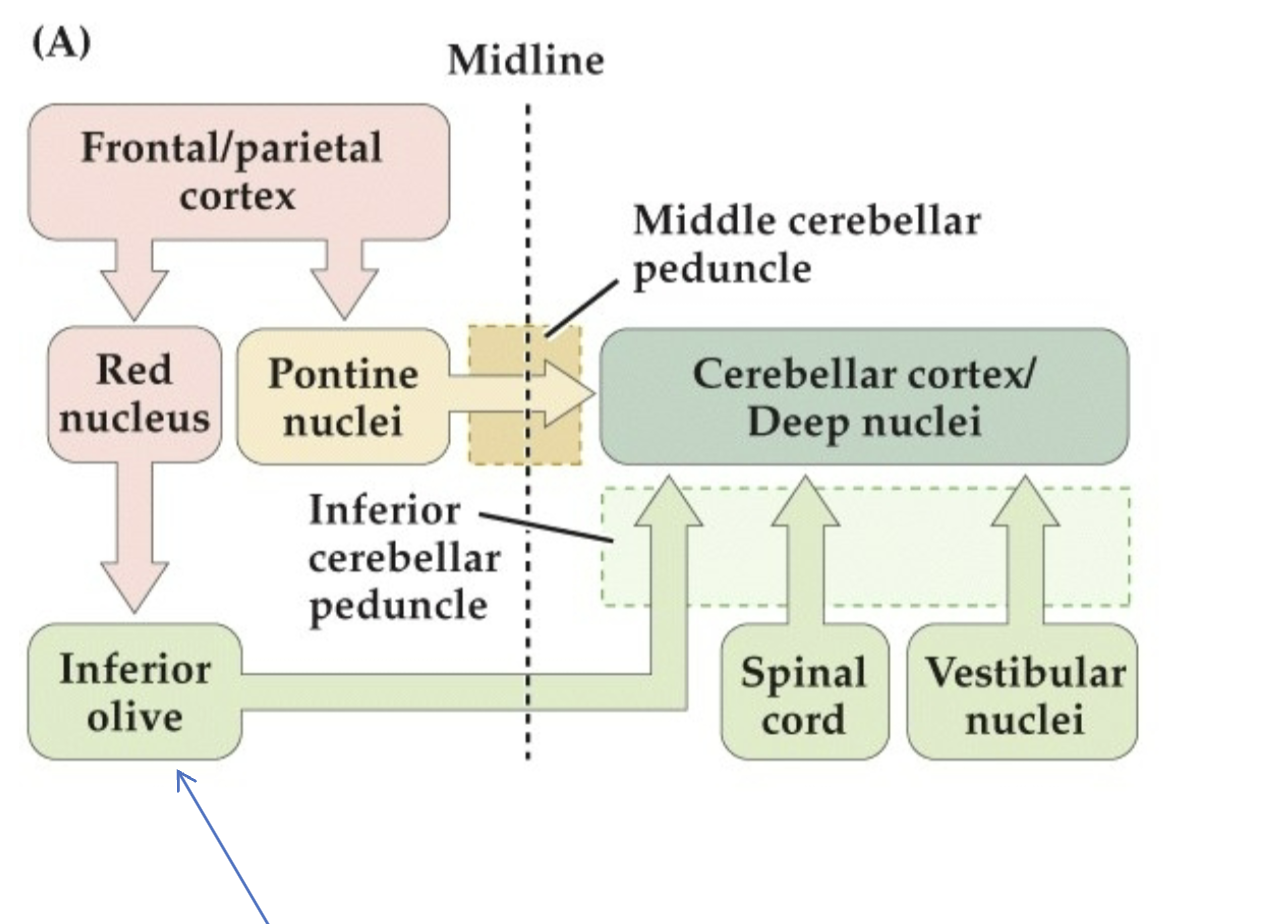
What information does NOT cross the midline (ipsilateral projection)?
Sensory information from the spinal cord and vestibular nuclei (brain stem)
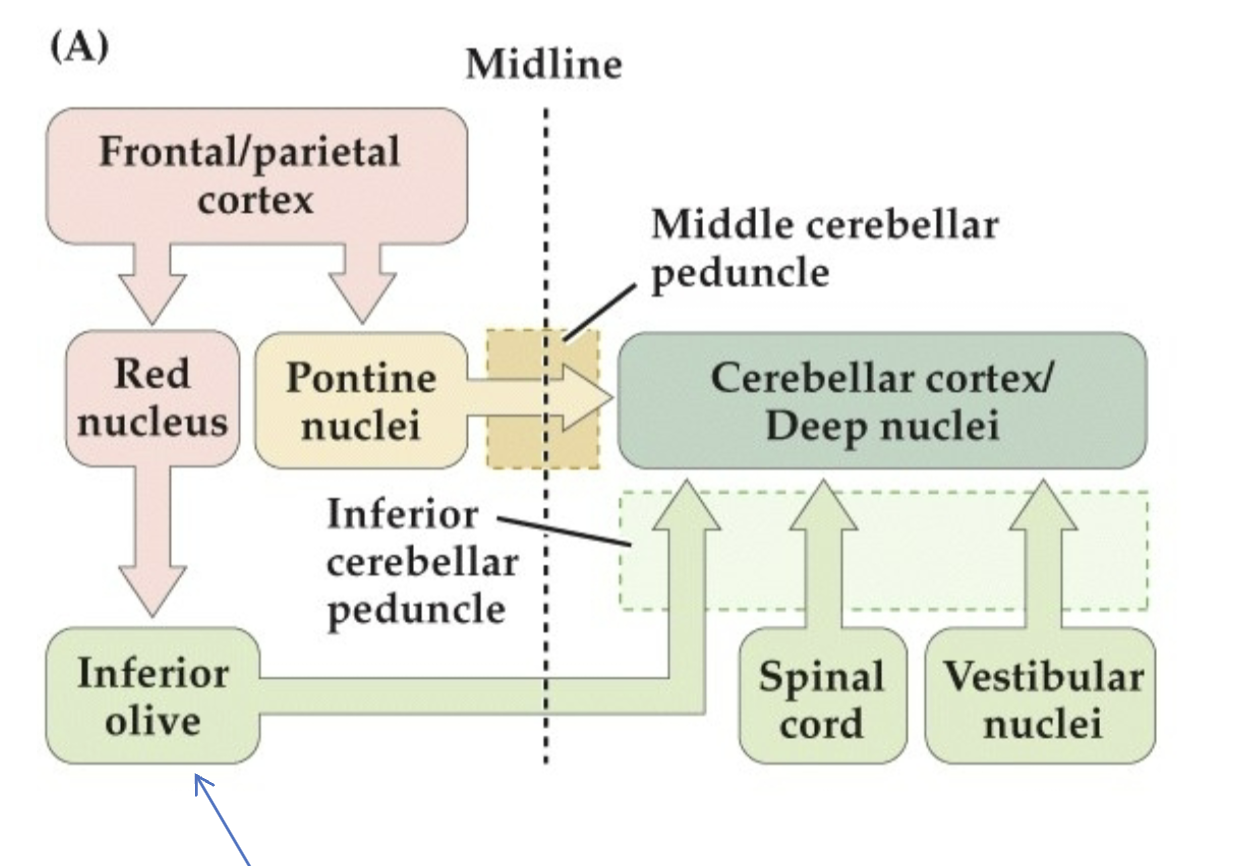
Damage to the right hemisphere of the frontal cortex, would mean the cerebellum lacks input about which side of the body (contralateral projection)?
LEFT side of the body
If a patient has left cerebellar damage they will exhibit deficits on the…
LEFT side of the body
Where does the cerebrocerebellum receive input from and where does it go?
Receives: Association Cortex
Goes: Pontine Nuclei
Where does the spinocerebellum receive input from and where does it go (hint: there are two)?
Receives: Somatosensory receptors (limbs) motor cortex
Goes: Spinocerebellar and pontine nuclei
Receives: Somatosensory receptors (trunk), auditory and visual information
Goes: Spinocerebellar nuclei
Where does vestibulocerebellum receive input from and where does it go?
Receives: Somatosensory receptors (neck), labyrinths, and visual information
Goes: Vestibular nuclei
What are the functions of cerebellar regions?
Spinocerebellum - muscle tone and coordination
Cerebrocerebellum - motor planning, learning & memory
Vestibulocerebellum - balance, postural adjustments, coordination of eye movements
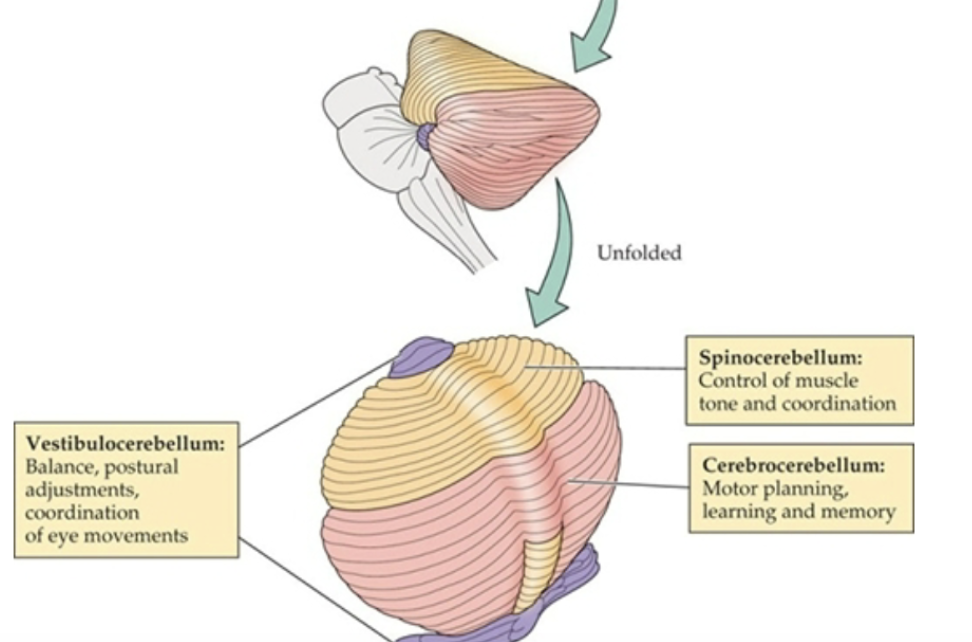
What cells form parallel running fibers?
Granule cells (their axons specifically)
What do parallel fibers do?
Excite Purkinje cells!
What cells inhibit Purkinje cells?
Basket and stellate cells!
What are climbing fibers?
They come from the inferior olive and excite the individual Purkinje cells.
What are Mossy fibers?
From the brainstem nuclei—they excite granule cells and are the most abundant cell type in cerebellum
What are the Purkinje cells?
The only OUTPUT of all motor coordination in the cerebellum!
Inhibit cells of deep cerebellar nuclei!
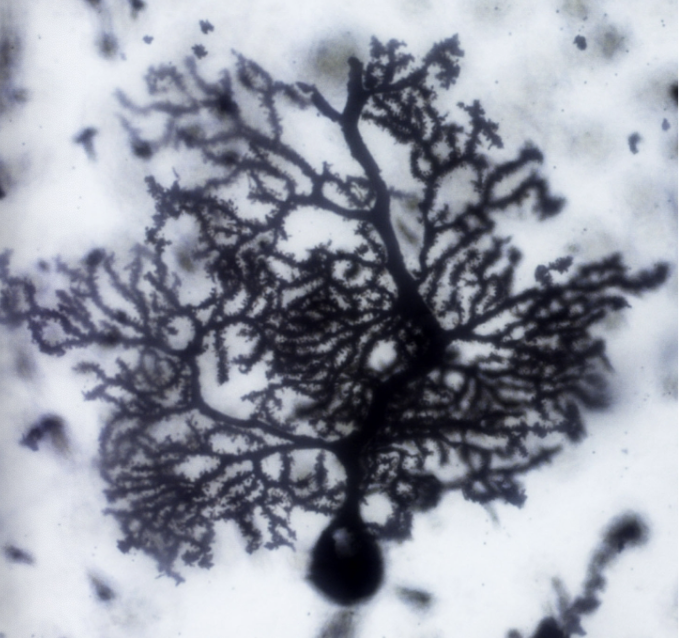
What activates the Purkinje cells?
Synchronization of the inferior olivary neurons
What are the major outputs from the cerebellum?
Deep cerebellar nuclei dentate → superior colliculus OR VL complex (thalamus)
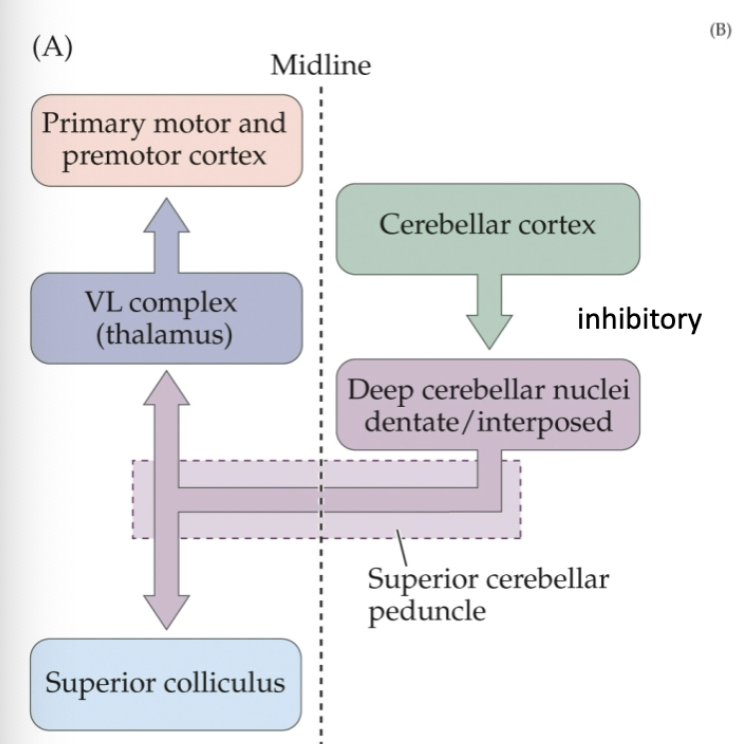
What are the deep cerebellar nuclei output for each cerebellar region?
Cerebrocerebellum: Dentate nucleus
Spinocerebellum: Interposed and fastigial nuclei
Vestibulocerebellum: Vestibular nuclei
What are the pathways of upper motor neurons from each cerebellar region?
Cerebrocerebellum: Premotor cortex
Spinocerebellum: Motor cortex and brainstem
Vestibulocerebellum: Lower motor neurons in spinal cord and brainstem
What are the typical defects in cerebellar disorders?
Delayed movement, range of movement errors, patterned movement errors.
What is range of movement errors?
Patients moving arm from raised position to nose exhibits inaccuracy in range and direction (dysmetria) AND shoulder and elbow move separately (decomposition of movement).
What is delayed movements?
Patients told to clench both hands, but there is a delay!
What is patterned movement errors?
Alterately pronate and spinate forearm, irregular pattern
What part of the cerebellum may be involved in word association tasks?
Right cerebellum
What’s the cognitive executive syndrome in the cerebellum?
People with injury to cerebellum exhibit:
cognitive function deficits
difficulties with language
disinhibited and inappropriate behaviors (personality changes)
inability to comprehend social boundaries
Is the cerebellum involved with sense of time?
Yes!
Motor evidence: IRREGULAR RHYTHM when cerebellar lesion patients make tapping movements
Non-motor evidence: Patient’s ability to judge elapsed time in purely mental or cognitive tasks; tone length; speed of moving object
What do medial cerebellar lesions interfere with?
Accurate execution
What do lateral cerebral lesions interfere with?
Timing of serial events
What’s the difference between basal ganglia and cerebellum?
Basal ganglia is involved in the gating & initiation of movement—direct path activates motor plans and indirect path suppresses paths
Cerebellum is involved in movement error correction and motor skill learning